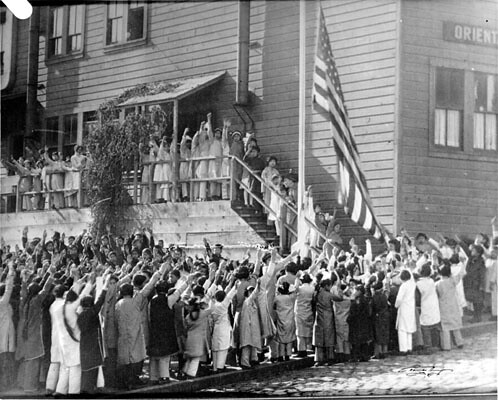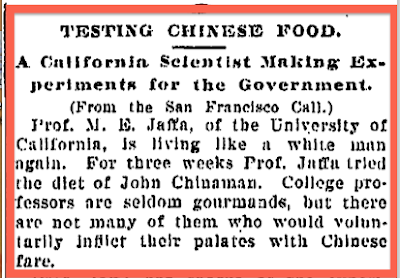".... any Chinese laborer, within the limits of the United States, who shall neglect, fail, or refuse to comply with the provisions of this act, or who, after one year from the passage hereof, shall be found within the jurisdiction of the United States without such certificate of residence, shall be deemed and adjudged to be unlawfully within the United States, and may be arrested, by any United States customs official, collector of internal revenue or his deputies, United States marshal or his deputies, and taken before a United States judge, whose duty it shall be to order that he be deported from the United States."
A noted Chinese artist, Hung Liu, now working in Oakland, California, created an "artistic protest" of the required "dog tag" that the Certificate of Residence represented with her satirical creation cleverly named, "Resident Alien" Card.
A commentary by Dong Li Isbrister pointed out some of the clever aspects that Liu used in her creation such as her fictitious name, Cookie, Fortune.
Another burden imposed on Chinese who wanted to make temporary visits to China or other places outside the U. S. was the requirement that they file an application to leave and reenter at least a month in advance before they wanted to depart. Two witnesses, preferably white because Chinese generally had low credibility, had to sign the application certifying that they knew the applicant to be worthy of reentry.
If they were laborers, as was the case in the example below, they had to have assets of at least $1,000 in property and/or debts owed to them in the U. S. to be eligible for reentry.
These burdensome requirements placed upon the Chinese reflected the attempts of Immigration authorities to reduce the Chinese population in the United States. Chinese leaving the country might find it difficult to reenter even with valid documents because Immigration officials knew that some Chinese acquired them fraudulently. Consequently, even Chinese with documents that belonged to them were suspect and interrogated intensively when returning from trips out of the U. S.


















